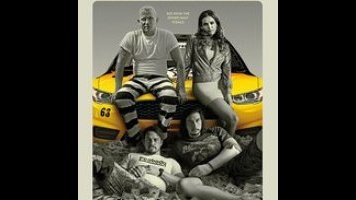Steven Soderbergh is back and great as ever with Logan Lucky

In Ocean’s 11 and its sequels, Steven Soderbergh made the business of robbery seem like a multifaceted lark: part boys’ club, part performance space, part showcase for the pleasures of improbably smooth professionalism. The heists that Danny Ocean and his crew pulled off were supposedly motivated by revenge or desperation, but the money itself always seemed secondary at best—almost gauche, in the world of the movie, to fully acknowledge.
After a four-year break from film directing, and a decade away from the heist genre, Soderbergh has returned with Logan Lucky, which features dialogue referring to the hillbilly heisting of “Ocean’s 7-11” before any smartass critics have a chance to put it in their headlines. It shares with the Ocean’s pictures an intricate plan to rob a heavily trafficked institution—here the Charlotte Motor Speedway in North Carolina, rather than a glitzy casino—but focuses on characters significantly less well-heeled. Jimmy Logan (late-period Soderbergh muse Channing Tatum); his brother, Clyde (Adam Driver); and their sister, Mellie (Riley Keough) don’t have much money. They also have what Clyde has determined to be a family curse of bad luck.
Their bad run includes Clyde’s stint in Iraq that left him with a prosthetic arm and Jimmy’s high school football injury that leads to his firing from a construction crew working the speedway, as well as several historical family anecdotes that sound funnier without good actors putting faces to the pain. When Jimmy’s ex-wife, Bobbie Jo (Katie Holmes), wants to move their daughter, Sadie (Farrah Mackenzie), further away, Jimmy reaches the end of his rope. He begins plotting a methodical list of rules for the perfect heist, to be carried out against the speedway and the master till that contains all the cash from its concessions.
The plan involves the facility’s vast network of pneumatic tubes; that much is clear from the outset. As a heist picture, Logan Lucky knows just how often to alternate straight exposition with cagey withholding. The full robbery blueprint is revealed slowly—new details are still twisting the narrative even after the big heist day has passed, perfect for Soderbergh’s control-freak tendencies (once again, he shoots and edits himself). The snappy script by unknown (and possibly pseudonymous) newcomer Rebecca Blunt offers some Coen brothers-like dialogue, which Soderbergh complements with his compositions. Sometimes he gets a laugh just by how he positions the actors in the frame, and there are multiple gags predicated on the timing of explosions.
The supporting cast provides some fireworks, too. Driver’s and Tatum’s controlled, empathetic deadpan—they make surprisingly convincing siblings—leaves room for wilder stuff elsewhere on their crew: Daniel Craig is hilarious as Joe Bang, the imprisoned drawling explosives expert who can’t quite believe the audacity of the Logans’ plan but goes along with it anyway, and Keough is a delight (if slightly underused) as the steely, performance-driving Mellie. For a certain type of crowd, this movie will qualify as a major pleaser, even treating lucky audiences to the sight of Seth MacFarlane getting slammed in the face (he’s well-deployed as a smarmy British NASCAR wheeler-dealer who runs afoul of the Logan brothers, who dutifully run afoul of him right back).
All of this adds up to great entertainment that runs perhaps slightly longer than necessary; it’s closer to the two-hour Ocean’s pictures than the fleetness of Soderbergh’s more experimental genre riffs. Yet the movie is also more than a Big Gulp-sized cup of late-summer lemonade. Its sense of economic anxiety has more in common with Magic Mike and The Girlfriend Experience, two sharp stories about selling sex during a recession. Logan Lucky’s timing and less provocative subject matter could have easily turned it into a condescending paean to white, rural anger in the Trump era. But while Soderbergh’s touch has often been described as chilly—all of that careful color-coding and trim, precise camera movement—he shows real warmth toward his characters here. The whole Logan family is treated with an unfussy dignity that more grandstanding directors might have missed in a rush to lionize, and both Tatum and Driver know how to generate human-scale pathos with understated gestures.
Particularly delicate is the relationship between Jimmy and Sadie, which Soderbergh, Blunt, and the actors manage to get across in just a couple of scenes. (Sadie isn’t exactly in the middle of the action as her dad plans prison breaks, safe-cracking, and assorted schemes.) To say much more might oversell or damper the emotional impact of a movie that indulges in some heistlike misdirection just by working well within its chosen genre. Soderbergh isn’t exactly hiding a secret drama inside his barrel of laughs and twists. But his comeback project keeps quiet about being one of the sweetest, most affirming movies he’s ever made.